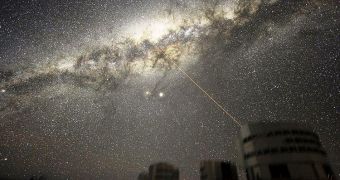According to the conclusions of the latest study on the issue, it would appear that our galaxy is indeed the color of fresh snow. Researchers were finally able to establish the color of the Milky Way by looking at nearby galaxies of similar properties.
Extrapolating from data they collected during this investigation allowed them to determine the color our galaxy appears to have in the eyes of an observer located outside its boundaries. Establishing this trait is very significant to astronomers.
By looking at the color of a galaxy, an expert is able to tell you a lot of things about the object, such as for example how old it is, what types of stars it has, how far away it is, and so on. In addition, performing in-depth analyses of galactic colors can reveal additional insight into stellar formation.
This process is extremely important towards understanding why our Universe looks the way it does today. To this day, astronomers have only limited knowledge of how this occurs. Granted, they have some ideas about potential explanations, but new data break their hypotheses with every new study.
In order to learn the color of the Milky Way, scientists chose to look at other, nearby galaxies. All the objects selected as part of this investigation had properties that made them very similar to the Milky Way, Space reports.
Observing the color of our galaxy directly is nearly impossible, due primarily to the vast amounts of hydrogen gas and interstellar dust that is obscuring our view of the inner regions. The galactic core can only be seen in radio, infrared, X-ray and gamma-ray wavelengths.
“We can really only see 1,000 to 2,000 light-years in any direction – the Milky Way is 100,000 light-years across. The problem is similar to determining the overall color of the Earth when you're only able to tell what Pennsylvania looks like,”says Jeffrey Newman.
The expert, who is based at the University of Pittsburgh, is also a coauthor of the new investigation. He says that scientists used data from the Sloan Digital Sky Survey (SDSS) to look at nearby galaxies.
It was determined that the Milky Way has the color of “fine-grained new spring snow seen in the early morning light, about an hour after dawn. If you were outside the Milky Way, it'd look white to you. The Milky Way has a very appropriate name,” Newman concludes.

 14 DAY TRIAL //
14 DAY TRIAL //